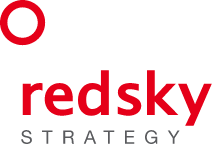News
Leading Indicators of Corporate Valuation – Part 1

Marketers and financial professionals tend to be as separate as church and state when it comes to corporate valuation. However, in observing consumer insights, we can see the paths of financial and market research sectors slowly merging – for the benefit of both parties.
“Marketers track and drive leading indicators which, in turn, help drive trailing indicators that later show up on profit & loss statements.”
Before getting into the merge, let’s take a look at the key performance indicators prioritized by financial institutions and firms, versus the primary KPIs as identified by marketers.
Financiers Focus on Revenue and Unit Sales (Trailing or “Lagging” Indicators)
It makes sense that banks and equity firms focus on these metrics. After all, they are responsible for holding a vast majority of capital for businesses and individuals. Therefore, associates at banks and private equity firms tend to look at key indicators like cash flow, liquidity, and product margins.
Marketers Focus on Brand and Consumer Relationships (Leading Indicators)
A marketer’s job is to tell the brand story in a way that is appealing and relatable to the target audience. So, naturally they look at the human-centric side of the picture. Whereas banks look at financial results, marketers look at things like brand equity, funnel conversion rates, and the customer lifetime value.
You can see how the merging of these two groups and their perspectives could be profitable. Businesses are less successful without a clear picture of product margins and cash flow. On the other hand, mere sales don’t tell the whole story when it comes to a company’s value, now nor in the future. This is where market research comes in. Marketers track and drive leading indicators which, in turn, help drive trailing indicators that later show up on profit & loss statements.
Market Research: Telling a Story to Support Company Value
Through market research, we can uncover and prioritize opportunities to amplify a company’s brand, and identify and engage a target market. Here are a few needs this can satisfy:
- Bolster corporate valuation – Track consumer value perceptions, customer satisfaction, cultural trends, unmet needs, and competitive benchmarking for products and brands
- Gain and maintain competitive edge – Track perceptions of a brand vs perceptions of its competitor brands to ensure that the value proposition and positioning are being communicated in a clear manner
- Improve innovation efficiency – Evaluate the market viability of new products as well as enhancements/add-ons to current ones to prioritize product development and optimize line extension
- Reduce customer acquisition costs – By looking at the demographics, psychographics and behaviors around purchasing within a brand’s target market, we craft messaging for the right consumers in the right medium at the right time, and improve ROI of sales activities across the board
- Increase customer lifetime value – lower retention costs, reduce churn, and expand revenue per user
Through this series, we will dive deeper into how financial and market research paths align. Additionally, we will see how the combination of metrics supports valuation, e.g., for a transaction. This will be shown through granular explanations of concepts earlier discussed as well as case studies showing methodology in action.
If you have questions as we continue this series, or would like to learn how your business can leverage these concepts, please reach out.
Our team at RedSky Strategy is familiar with working with private equity, venture capital, corporate development, and investment banking professionals. Our experience includes supporting capital raises, mergers, and acquisitions. We are well-equipped to help you bolster corporate valuation through strategically weaving together data, market dynamics, and brand story.
